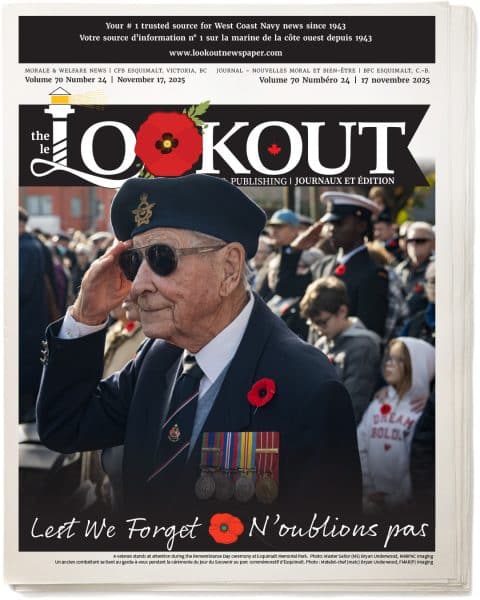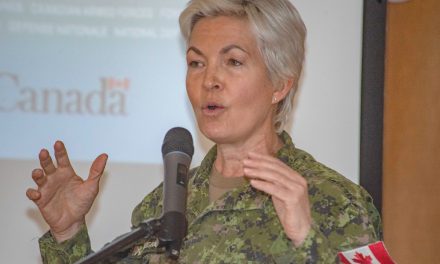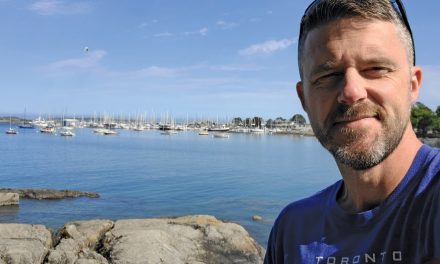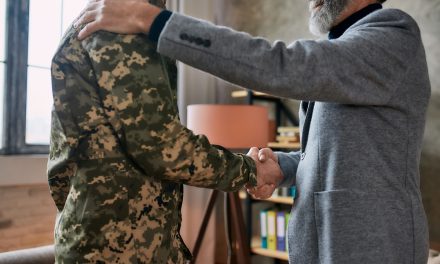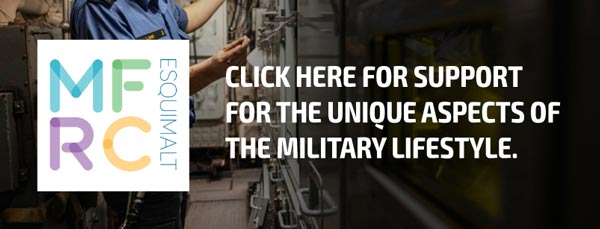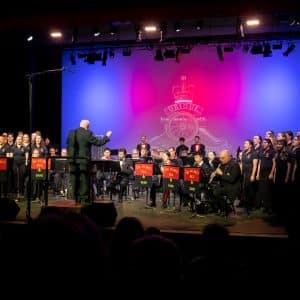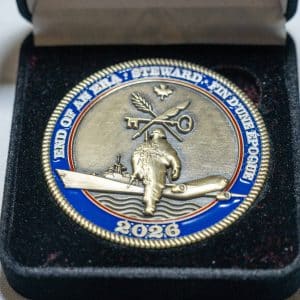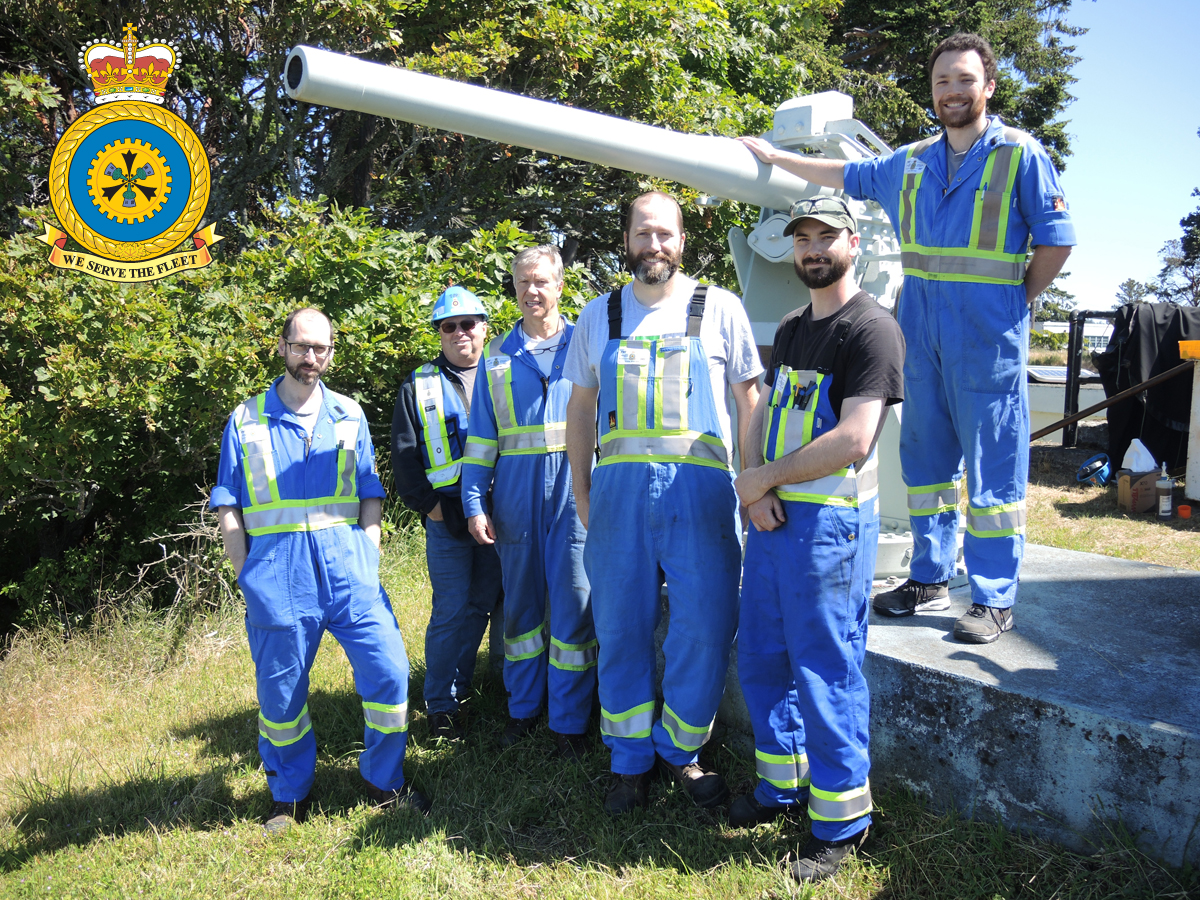
Members of FMF Cape Breton’s Surface Weapons Work Centre, Shop 162A, gather for a group photograph in front of the quick-firing 12-pounder gun located at Black Rock Naval Battery in HMC Dockyard. Photo: Peter Mallett/Lookout Newspaper.
Peter Mallett,
Staff Writer
—
Perched atop a bluff at Black Rock Naval Battery, a nine-member gun crew of Naval Fleet School (Pacific) fired off the traditional 21-gun salute with expert precision. The thunderous roar echoed across the Esquimalt Harbour for Princess Anne’s visit last month.
The five-pound blank casing shells detonated from the barrels of three Quick-Firing 12-pounder, 12 cwt, 3” pedestal mount guns.
Getting the artillery to properly fire and keeping it well-maintained for future uses is no small trick, explains Tim Christy, a supervisor at Fleet Maintenance Facility (FMF) Cape Breton’s Surface Weapons Work Centre, also known as Shop 162A.
“It’s always good to see the finished product in use as we never usually get to see our work in action,” says Christy. “FMF takes pride in all the weapons we maintain and do our best to supply the Navy with what they need to stay safe when deployed.”
Making sure the weapons are firing on all cylinders takes teamwork from a variety of FMF workers and shops, whose job is to support the fleet and operations of Maritime Forces Pacific.
To ensure the 12-pounders were ‘up to snuff’ for the royal visit, workers at Shop 162A carefully stripped the guns down into a collection of parts. Then, the parts were sent over to FMF’s Chemical Cleaners Shop 125 for descaling and prep work followed by a trip to FMF’s Sandblasters Shop 111. The artillery then paid a visit to the paint and graphics department at Shop 123 to get a brand-new look. After the guns were reassembled, workers at Shop 142 (Non-Destructive Testing) made sure the firing components were safe to fire. The entire process took approximately six months to complete, says Christy.
“I am so proud of all the crews at FMF, the different experience they bring to the job and the meticulous work they do,” said Christy. “Our shop is required to diagnose many of the repairs and maintenance we perform through phone calls, pictures and emails from different ports. We even travel to repair anything we service, and I can count on them to always get the job done.”
Shop 162A is responsible for all things surface-weapons related, including Close-In Weapons Systems (CIWS), 57mm guns, guided missiles, harpoons, 50 caliber and remote 50 caliber mounts, Multi-Ammunition Softkill Systems (MASS) launchers and Surface Off-board Passive Decoy (SOPD) launchers.
Christy notes there are also items that come into his shop with much greater historic value.
“Some of the saluting cannons that we maintain and repair for [naval] cadets are very old but in amazing condition when we leave,” said Christy. “We have taken some pretty poor conditioned guns and made them look like new, and I am always impressed with the work we do from cleaning to machining and everything in between.”
The last time the 12-pound guns were refurbished was in 2017. Christy and his crews returned to Black Rock Gun Battery on June 7 to thoroughly clean the barrels and chambers of artillery. They then wrapped up the guns in protective fabric covers, custom-fitted and designed by FMF’ Sail Loft 124E, to protect them from the elements.
Did you know?
In British service, “12-pounder” was the rounded value of the projectile weight, and “12 cwt (hundredweight)” was the weight of the barrel and breech, to differentiate it from other “12-pounder” guns.
The hundredweight is a customary unit of weight or mass, which has two meanings. In British imperial measurement, the hundredweight is also known as “centum weight”, while in the United States it is known as “quintal”. The two values are distinguished in American English as the “short” and “long” hundredweight and in British English as the cental and imperial hundredweight. Under both conventions, there are 20 hundredweight in a ton, producing a “short ton” of 2,000 pounds (907.2 kg) and a “long ton” of 2,240 pounds (1,016 kg).
The QF (Quick-Firing) 12-pounder 12-cwt gun was a common, versatile 3-inch (76.2 mm) calibre naval gun introduced in 1894 and used until the middle of the 20th century. It was produced by Armstrong Whitworth, Elswick and used on Royal Navy warships, exported to allied countries, and used for land service.
The five-pound blank casing shells detonated from the barrels of three Quick-Firing 12-pounder, 12 cwt, 3” pedestal mount guns.
Getting the artillery to properly fire and keeping it well-maintained for future uses is no small trick, explains Tim Christy, a supervisor at Fleet Maintenance Facility (FMF) Cape Breton’s Surface Weapons Work Centre, also known as Shop 162A.
“It’s always good to see the finished product in use as we never usually get to see our work in action,” says Christy. “FMF takes pride in all the weapons we maintain and do our best to supply the Navy with what they need to stay safe when deployed.”
Making sure the weapons are firing on all cylinders takes teamwork from a variety of FMF workers and shops, whose job is to support the fleet and operations of Maritime Forces Pacific.
To ensure the 12-pounders were ‘up to snuff’ for the royal visit, workers at Shop 162A carefully stripped the guns down into a collection of parts. Then, the parts were sent over to FMF’s Chemical Cleaners Shop 125 for descaling and prep work followed by a trip to FMF’s Sandblasters Shop 111. The artillery then paid a visit to the paint and graphics department at Shop 123 to get a brand-new look. After the guns were reassembled, workers at Shop 142 (Non-Destructive Testing) made sure the firing components were safe to fire. The entire process took approximately six months to complete, says Christy.
“I am so proud of all the crews at FMF, the different experience they bring to the job and the meticulous work they do,” said Christy. “Our shop is required to diagnose many of the repairs and maintenance we perform through phone calls, pictures and emails from different ports. We even travel to repair anything we service, and I can count on them to always get the job done.”
Shop 162A is responsible for all things surface-weapons related, including Close-In Weapons Systems (CIWS), 57mm guns, guided missiles, harpoons, 50 caliber and remote 50 caliber mounts, Multi-Ammunition Softkill Systems (MASS) launchers and Surface Off-board Passive Decoy (SOPD) launchers.
Christy notes there are also items that come into his shop with much greater historic value.
“Some of the saluting cannons that we maintain and repair for [naval] cadets are very old but in amazing condition when we leave,” said Christy. “We have taken some pretty poor conditioned guns and made them look like new, and I am always impressed with the work we do from cleaning to machining and everything in between.”
The last time the 12-pound guns were refurbished was in 2017. Christy and his crews returned to Black Rock Gun Battery on June 7 to thoroughly clean the barrels and chambers of artillery. They then wrapped up the guns in protective fabric covers, custom-fitted and designed by FMF’ Sail Loft 124E, to protect them from the elements.
Did you know?
In British service, “12-pounder” was the rounded value of the projectile weight, and “12 cwt (hundredweight)” was the weight of the barrel and breech, to differentiate it from other “12-pounder” guns.
The hundredweight is a customary unit of weight or mass, which has two meanings. In British imperial measurement, the hundredweight is also known as “centum weight”, while in the United States it is known as “quintal”. The two values are distinguished in American English as the “short” and “long” hundredweight and in British English as the cental and imperial hundredweight. Under both conventions, there are 20 hundredweight in a ton, producing a “short ton” of 2,000 pounds (907.2 kg) and a “long ton” of 2,240 pounds (1,016 kg).
The QF (Quick-Firing) 12-pounder 12-cwt gun was a common, versatile 3-inch (76.2 mm) calibre naval gun introduced in 1894 and used until the middle of the 20th century. It was produced by Armstrong Whitworth, Elswick and used on Royal Navy warships, exported to allied countries, and used for land service.

